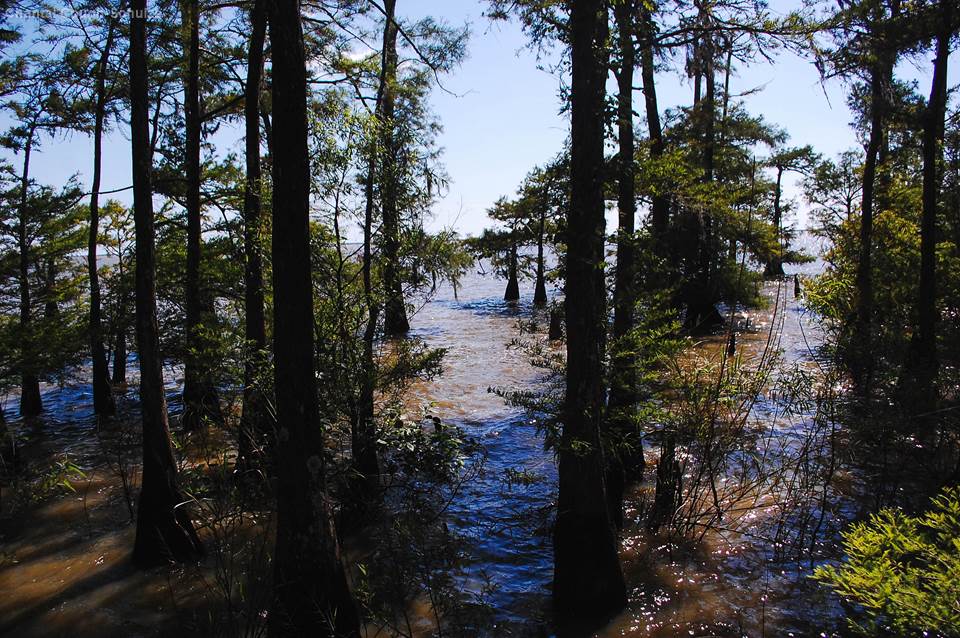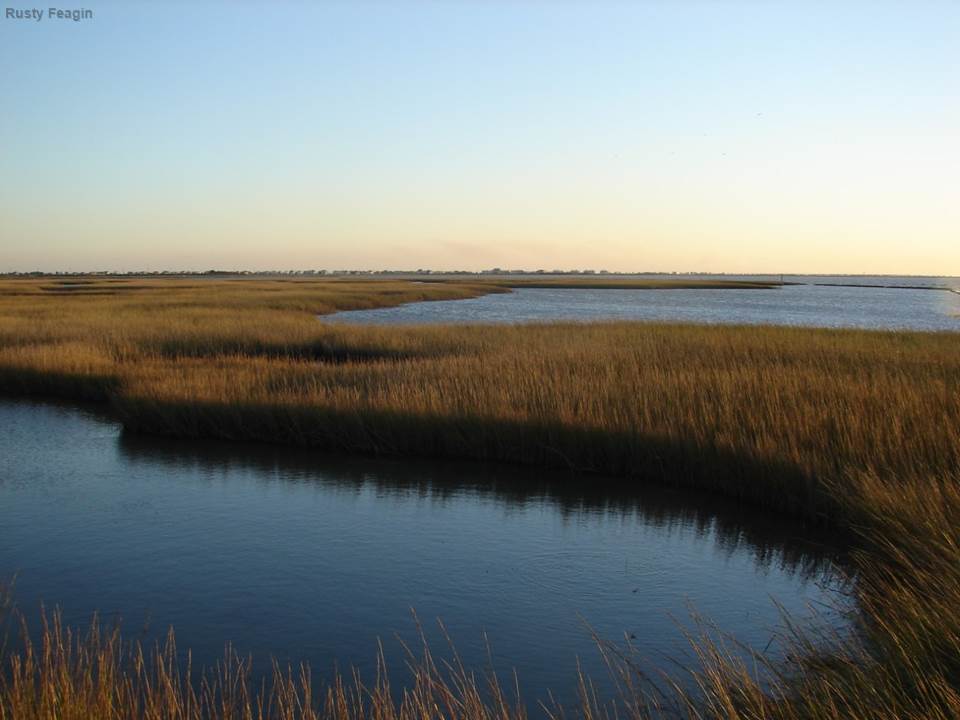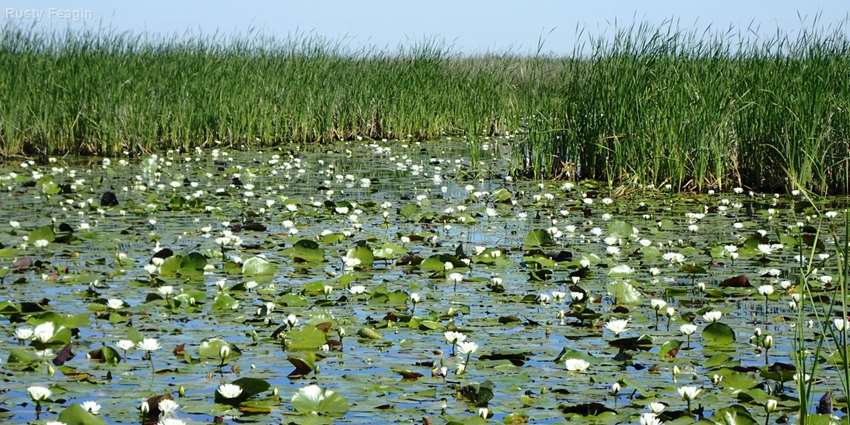Across Texas, there are a wide diversity of wetlands. Sometimes, they crop up in places one might not expect. While working with the Texas Playa Conservation Initiative through Texan by Nature’s (TxN) Conservation Wrangler program, TxN program manager Jenny Burden learned to spot playas, which are shallow clay-lined depressions scattered across the Panhandle region.
“Depending on the weather, some playas are dry, and you can understand how people might say, ‘It just looks like a dip in the ground — what’s the big deal?’” Burden said.
“But as soon as a rain event happens and the playas fill up, it's very obvious that they’re a permanent feature in the land. They’re thriving and full of life, showing, especially in a wide-open prairie landscape like the Panhandle, how vitally important they are.”
Wetlands have historically been misunderstood, said Dr. Rusty Feagin, coastal ecologist and professor in Texas A&M University’s Department of Ecology and Conservation Biology.
“Historically, some people thought of wetlands like nasty places we need to fill in or useless land,” he said. “But really, they're among the most productive and valuable ecosystem in terms of the goods and services they provide to humans.”
Nicknamed the kidneys of the earth for their ability to filter water and improve water quality, wetlands are defined by three things: water, plants and soils. To be a wetland, water should flow through or stand in the area for some part of the year, and the plants should be able to survive in wet environments. Wetland soils are saturated for some part of the year and can do well without much oxygen.
“Texas has a good diversity in rainfall and water flow, so that gives us a good diversity of wetlands,” Feagin said.
In East Texas, there are the bottomlands, forested swamps shaped by streams and populated by alligators, wood ducks and swamp rabbits. As you head into Central Texas, Feagin said, you’ll start to see more groundwater-driven wetlands: Water from aquifers seeps through cracks in limestone to create pools and streams loved by salamanders and cricket frogs. Farther west, the land gets dryer, and spring-fed ciénegas and ephemeral wetlands provide homes for species that otherwise might not survive in such a dry place.
To the south, wind erodes topsoil to create sand sheet marshes, depressions that hold rainwater and provide rare freshwater for local fauna. Coastal wetlands on the Gulf of Mexico are a mix of fresh water and saltwater, ranging from tidal flats to spindly-legged, salt-tolerant mangrove forests. As Burden saw up north in the Panhandle, ephemeral playas crop up in the agricultural landscape “like holes in Swiss cheese,” said Taylor Keys, TxN program manager.
Across the state, wetlands improve water quality — sediment settles out of the water and the plants take up nutrients from the water.
“Wetlands are like sewage treatment plants that are natural. It’s a big filtration system,” Feagin said.

The Panhandle’s clay-lined playas, which can range in size from half an acre to hundreds of acres, are especially important sponges, Keys and Burden said.
“When it rains, the water fills the playa and the clay swells and seals, and then it's a temporary wetland,” Burden said.
“As the sun beats down, the water starts evaporating. Cracks form in the clay, and then that water sinks through and recharges the Ogallala Aquifer.”
The 111.8 million-acre Ogallala Aquifer supplies water for a quarter of U.S. agricultural production and more than 40% of U.S. feedlot beef cattle, as well as drinking water for 82% of the people living within the aquifer’s boundaries. But water table levels in the aquifer are declining.
“Playas contribute up to 95% of the inflow to the Ogallala Aquifer, so they're incredibly important,” Burden said.
Wetlands also provide vital habitat. Ephemeral wetlands provide resources for flora and fauna that otherwise couldn’t survive in dryer places. On the Gulf Coast, exhausted birds migrating along the Central Flyway, a major migration route, stop in wetlands to load up on food, Feagin said.
Wetlands also provide experiences, resources and income for people who come to wetlands to explore, birdwatch, hunt and fish.
“Ninety-five percent of Gulf commercial and recreational fish species have some portion of their lifecycle dependent on coastal wetlands,” Feagin said. “Salt marshes are the basic foundation of the Gulf of Mexico ecosystem.”
Coastal wetlands also capture carbon from the atmosphere, storing up to 50 times more carbon per unit area than tropical rainforests. As coastal wetlands build elevation in response to sea level, wetland plants deposit more organic materials into the soil, storing carbon.
“If you drill down below coastal wetlands, it’s basically old wetland soils for hundreds and thousands of meters underground,” Feagin said. “Wetlands have been burying carbon for millions of years, so it’s really rich.”
Having a diversity of wetland types means Texas also has a diversity of wetland threats, he said.
Historically, wetlands were often drained and filled in. In the Panhandle, older irrigation practices disrupted the clay lining of many playas in the Panhandle, Burden said, so they no longer recharged the Ogallala Aquifer. And for all wetlands’ filtering ability, they can’t filter everything, so toxic chemicals running off from streets and fertilized lawns can damage wetland ecosystems.

On the coast, wetlands can’t keep up with the pace of sea level rise, which can drown plants and upset the delicate balance of fresh and salt water. As the climate changes, droughts will become more frequent, Feagin said.
“But when we do get rains, they’re going to be gigantic. That affects all of Texas, inland or coastal,” he said.
However, solutions are underway across the state.
Some solutions are more straightforward than others. The clay soil needed to fix playas is often still sitting nearby, Burden said.
“It’s a matter of putting the dirt back where it’s supposed to be, restoring the grass layers that are around the playas and returning them to functionality,” she said.
People are restoring wetlands elsewhere in the state as well — or creating entirely new ones. Programs like Ducks Unlimited’s Texas Prairie Wetlands Project provides private landowners cost-effective ways to restore and create wetlands that provide habitat for migrating waterfowl on the Gulf Coast. In North Texas, former agricultural land — that was likely wetlands long ago — is being converted back into wetlands to help turn wastewater into drinking water, solving two water problems at the same time. On the coast, restoring salt marshes has brought back tidal flows and aquatic life, and building oyster reefs off the coast can help protect wetlands from erosion, Feagin said.
There’s a growing understanding that protecting and restoring wetlands can have broad economic benefits, as well as ecological benefits, Burden said. Though the economic benefits may be harder to calculate than for a bridge, wetlands are just another form of economy-assisting infrastructure, Feagin said.
“The investment in building bridges and roads 50 to 100 years ago helped us have a better economy,” he said. “Now we need to also invest in wetlands. Nature is the infrastructure for everything. Investing in the natural infrastructure provided by wetlands can also help build our economy.”
As for the bigger threats to wetlands — sea level rise, drought, rain on rarely seen scales — solving them may require more of a perspective shift, he said.
“The world is very dynamic, and things are changing fast,” he said. “Sea level is rising, and we're having increasing storms. We have a clash between natural dynamics and the human desire for stability.”
“The same way we can construct things that are negative for the environment, we can make things that are positive for the environment. It’s a choice we have to make as a society.”
The necessary perspective shift is happening, Burden said.
“Awareness is starting to grow. Texans are working hard to be ahead of the curve to make sure we don’t run out of water,” she said.
Texas’s efforts to restore its diverse wetlands “are great models that can be adopted not only in other places in Texas but in other places in the world,” Keys said. “Texas is a leader in conservation.”


